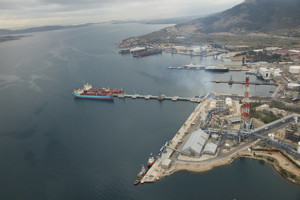Several refining projects are scheduled in Asia and the Middle East
(EIA) - In Asia and the Middle East, at least nine refinery projects are beginning operations or are scheduled to come online before the end of 2023. At their current planned capacities, they will add 2.9 MMbpd of global refinery capacity once fully operational.
In the International Energy Agency’s (IEA) June 2022 Oil Market Report, the IEA expects net global refining capacity to expand by 1.0 MMbpd in 2022 and by an additional 1.6 MMbpd in 2023. Net capacity additions reflect total new capacity minus capacity that has closed.
The scheduled expansions follow a period of reduced global refining capacity. Net global capacity declined in 2021 for the first time in 30 years, according to the IEA. The new refinery projects would increase production of refined products, such as gasoline and diesel, and in turn, they might reduce the current high prices for these products.
China’s refinery capacity is scheduled to increase significantly this year. The Shenghong Petrochemical facility in Lianyungang has an estimated capacity of 320,000 bpd, and they report that trial crude oil-processing operations began in May 2022. In addition, PetroChina’s 400,000 bpd Jieyang refinery is expected to come online in the third quarter of 2022. A planned 400,000 bpd Phase II capacity expansion also began operations earlier this year at Zhejiang Petrochemical Corporation’s (ZPC) Rongsheng facility. More information on these expansions is available in our Country Analysis Executive Summary: China.
Outside of China, the 300,000 bpd Malaysian Pengerang refinery (also known as the RAPID refinery) restarted in May 2022 after a fire forced the refinery to shut down in March 2020. In India, the Visakha Refinery is undergoing a major expansion, scheduled to add 135,000 bpd by 2023.
New projects in the Middle East are also likely to be an important source of new refining capacity. The 400,000 b/d Jizan refinery in Saudi Arabia reportedly came online in late 2021 and began exporting petroleum products earlier this year. More recently, the 615,000 b/d Al Zour refinery in Kuwait—the largest in the country when it becomes fully operational—began initial operations earlier this year. A new 140,000 bpd refinery is scheduled to come online in Karbala, Iraq, this September, targeting fully operational status by 2023. A new 230,000 bpd refinery is set to come online in Duqm, Oman, likely in early 2023.
These estimates do not necessarily include all ongoing refinery capacity expansions. Moreover, many of these projects have already been subject to major delays, and the possibility of partial starts or continued delays related to logistics, construction, labor, finances, political complications, or other factors may cause these projects to come online later than estimated. Although the potential for project complications and cancellations is always a significant risk, these projects could otherwise account for an increase of nearly 3.0 MMbpd of new refining capacity by the end of 2023.
For more information on these and other potential increases in global refining capacity, refer to our recent This Week in Petroleum article.
Principal contributor: Kevin Hack







Comments